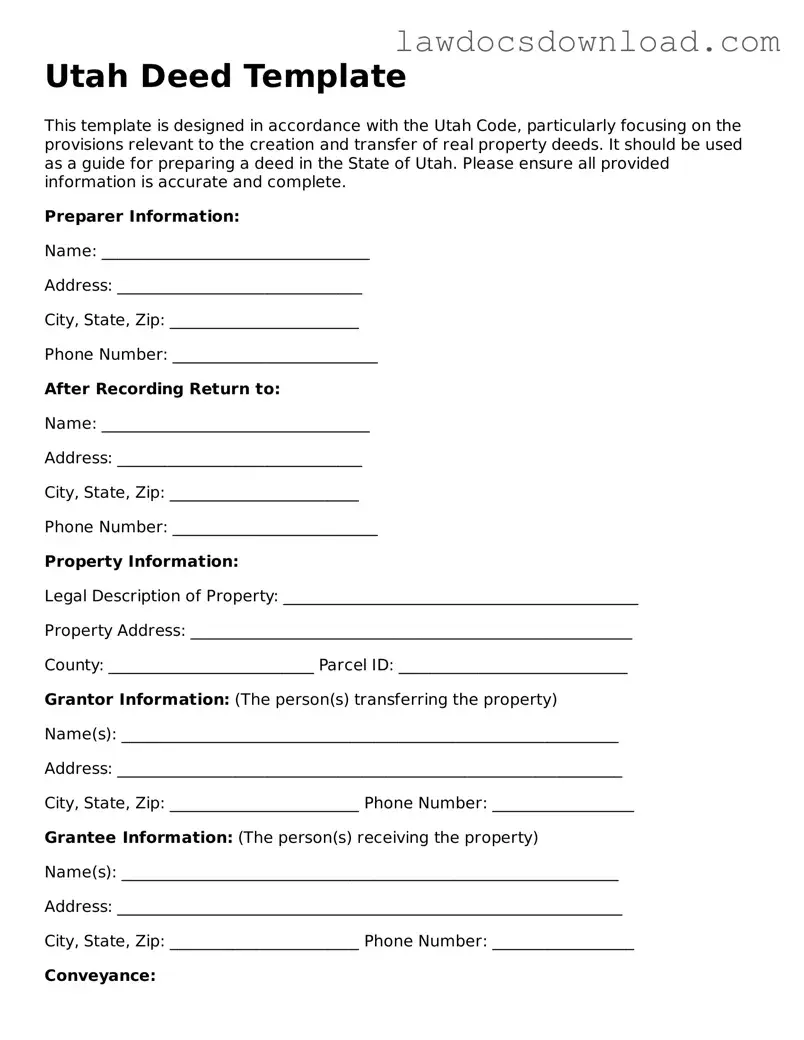Utah Deed Template
This template is designed in accordance with the Utah Code, particularly focusing on the provisions relevant to the creation and transfer of real property deeds. It should be used as a guide for preparing a deed in the State of Utah. Please ensure all provided information is accurate and complete.
Preparer Information:
Name: __________________________________
Address: _______________________________
City, State, Zip: ________________________
Phone Number: __________________________
After Recording Return to:
Name: __________________________________
Address: _______________________________
City, State, Zip: ________________________
Phone Number: __________________________
Property Information:
Legal Description of Property: _____________________________________________
Property Address: ________________________________________________________
County: __________________________ Parcel ID: _____________________________
Grantor Information: (The person(s) transferring the property)
Name(s): _______________________________________________________________
Address: ________________________________________________________________
City, State, Zip: ________________________ Phone Number: __________________
Grantee Information: (The person(s) receiving the property)
Name(s): _______________________________________________________________
Address: ________________________________________________________________
City, State, Zip: ________________________ Phone Number: __________________
Conveyance:
The Grantor(s) hereby convey(s) to the Grantee(s) the real property described above, free of all encumbrances except as specifically noted herein:
Encumbrances: ___________________________________________________________
Consideration:
The total consideration for this conveyance is $____________________________________.
Signatures:
All parties involved in this transaction shall sign and date this document in the presence of a notary public.
_____________________________ ______________
Grantor Signature Date
_____________________________ ______________
Grantee Signature Date
This document was acknowledged before me on (date) ________ by (name(s) of individual(s)) ________________________________________________.
_____________________________ ______________
Notary Public Signature Date
My commission expires: ____________.
This template provides a basic outline for a Utah deed. It is crucial for individuals to consult with a legal professional to ensure that all aspects of the deed comply with Utah law and are appropriate for the specific circumstances of the property transfer.
